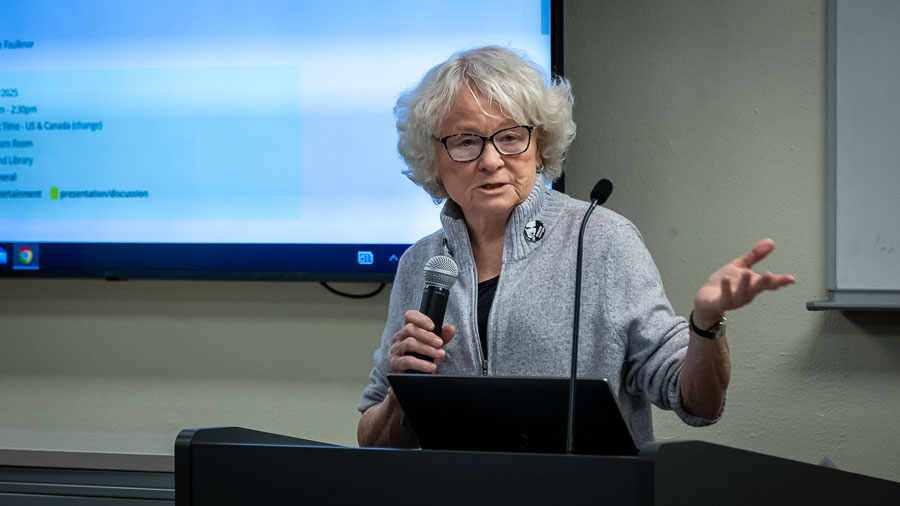Another big Oregon school district’s labor negotiations are heating up
Published 6:00 am Sunday, July 21, 2024

- Amanda, left, and Amelia Phillips meet Principal Ruth Tucker outside William Walker Elementary School in Beaverton last August. Beaverton's teachers and its district officials are currently negotiating over a new labor contract.
Oregon’s largest and second largest school districts both went through contentious negotiations with their teacher unions in the 2023-24 school year.
Now it’s the third largest district’s turn.
The Beaverton Education Association has been bargaining with the Beaverton School District since mid-February without resolution. The two sides remain relatively far apart on some key issues, including salary and compensation.
But both the union’s president and a spokesperson for the school district say that the tone of negotiations has remained cordial and that there is broad consensus on how much funding is available to meet the union’s requests. That was a key missing piece in the Portland negotiations that helped lead to school buildings being shuttered for almost the entire month of November.
The Beaverton Education Association began negotiations in February by asking for an 18% cost of living raise over the next two years, 10% for the 2024-25 school year and 8% for the following year. The school district’s initial response was to offer 3% raises in each of the next three years — in other words, about as much spread over three years as the union sought for a single year.
Since then, both sides have made slight adjustments. The district is now offering 3.5% compounding raises for each of the next three years, while the union’s most recent counter proposal was a 9% raise for the upcoming school year and 7% for 2025-2026.
Both sides agreed to pause negotiations over the summer, with plans to resume in late August. Beaverton Education Association President Lindsay Ray said she has fielded some questions from members about the possibility of a strike, but in an interview with The Oregonian/OregonLive this week she stressed that “we are not close to that right now.”
At the most recent negotiating session, in June, the union signaled that it would retreat on its request for hard caps on class sizes. That came after the school district’s associate superintendent for business services, Michael Schofield, said meeting the request would require the district to hire 728 new employees at a cost of $105 million over the life of the contract. Alternatively, Schofield said, Beaverton could move away from a budgeting model that has kept class sizes lower at higher poverty schools but that could have fallout for the district’s most vulnerable students.
“If equal is more important than equity, we can look at that,” he said.
After his presentation, the union said that in lieu of hard caps, it would seek to have union members make up at least one half of the seats on any district-level committee that meets during the year to discuss staffing levels in individual buildings and classrooms.
The Oregon Education Association has sought for years to make class sizes a mandatory topic of bargaining across all schools, giving teachers the right to strike over class size thresholds. But currently it is only a mandatory subject of bargaining in schools that receive money from the federal Title I program for low-income students. Class size caps were both a huge rallying cry for families during the Portland strike and a huge sticking point for negotiators; the logjam broke only when the district agreed to create school-level class size advisory committees with parent representation.
Insurance costs and caps have emerged as a key concern for teachers in Beaverton, as rates have steadily climbed. Shellie Bailey-Shah, a spokesperson for the district, said that to keep costs lower, Beaverton offered new plans this spring that in some cases changed what was covered to keep monthly premiums lower.
Another issue that’s likely to bubble up when negotiations resume next month: Beaverton’s ending fund balance, which Schofield estimated at about $160 million for the just-concluded school year, or about 22% of its $705 million operating budget.
Many school districts in Oregon keep between 5% and 10% of their budget in reserve as a cushion against emergencies.
Ray acknowledged that Beaverton’s fiscal prudence has shielded the district from the kinds of cuts that others have faced this year. But she said at least some reserve funds could be tapped to meet teachers’ requests and student needs.
“There are ways we can use that right now, to offset some of the resources we are lacking,” she said.
This week, Gov. Tina Kotek announced that she backs changes to the way the state calculates how much money school districts need to continue current programs and services. Those adjustments could add an extra half-billion dollars to schools’ bottom lines for the upcoming two-year budget cycle, though it’s not yet clear what other areas of the state’s budget might be pruned back to account for the increase for schools.










